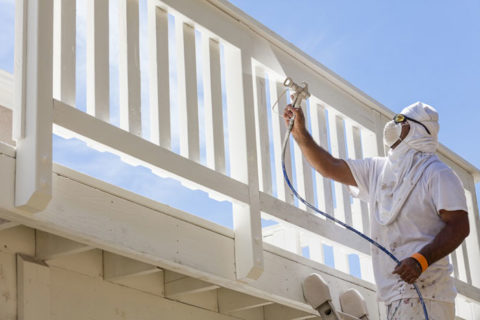Removing Peeling Paint From Your Deck
Removing Pesky Peeling Paint
When it comes to maintaining your deck, peeling paint is a common and frustrating issue. Not only does it harm the beauty of your outdoor living space, but it can also lead to more substantial problems if not addressed promptly. Understanding how to fix peeling paint on deck surfaces is essential to preserving the life and aesthetics of your deck. This comprehensive guide will cover the causes of peeling paint, signs that your deck needs repairs, the right time to repaint your deck, and tips for repairing peeling paint effectively.
Causes of Peeling Paint
One of the primary questions homeowners ask is, “What causes paint to peel?” Several factors can contribute to the deterioration of deck paint:
Moisture: Water is the arch-enemy of paint adhesion. Rain, snow, and even humidity can penetrate the wood, causing the paint to lift and peel.
Poor Adhesion: If the surface wasn’t prepared correctly before painting, such as not being cleaned or sanded, the paint might not adhere well, leading to peeling.
UV Radiation: Constant exposure to the sun’s ultraviolet rays can degrade the paint’s binders, leading to cracking and peeling.
Temperature Fluctuations: Dramatic changes in temperature can cause wood to expand and contract, which makes paint lose its grip on the surface.
Inferior Paint Quality: Low-quality paint or the wrong type of paint for decking materials often leads to premature peeling.
Signs That You Need Repairs
The first step in fixing the issue is to recognize the signs that you need repairs. Here’s how to spot the telltale signs:
Visible Peeling or Flaking: The most obvious sign that repair is needed is when the paint begins to lift off in strips or flakes.
Bubbling Paint: This can indicate trapped moisture under the paint and can precede peeling.
Cracking or Checking: Fine lines in the paint surface can expand over time, leading to peeling.
Wood Discoloration: If you notice stains or discoloration on the wood around peeling paint, it’s a sign that water is affecting the substrate.
When to Repaint a Deck
Deciding when to repaint a deck is crucial. Ideally, you should not wait until the paint is extensively damaged. The beginning of spring or fall, when temperatures are more moderate, is the best time for this task, as the paint will cure properly without the interference of high heat or freezing temperatures. Furthermore, ensuring the wood is dry and free from moisture will increase the lifespan of your new paint job.
Tips to Repair Peeling Paint on Deck Surfaces
Repairing peeling paint on your deck can seem intimidating, but with the right approach, it can be manageable. Below are tips on how to repair peeling paint effectively:
Preparation is Key: Before you start, inspect the deck for any rotten wood or damage and repair these areas first.
Remove Loose Paint: Use a paint scraper or a pressure washer set on a low setting to remove any loose or peeling paint. This step is crucial for how to fix peeling paint on any surface, including how to fix paint peeling off the wall.
Sand the Surface: Once the loose paint is removed, sand the surface smooth. This will not only remove the last of the peeling paint but will also provide a rough surface for better paint adhesion.
Clean the Deck: Ensure that all dust and debris are cleaned off the deck. A clean surface is essential for the new paint to adhere properly.
Prime the Surface: Use a high-quality primer designed for exterior use. Priming helps seal the wood from the elements and provides a surface that the paint can bond to.
Choose the Right Paint: Select a paint designed for deck use, which can handle foot traffic and resist the elements. Consider using a paint that contains a mildewcide if your deck is prone to moisture.
Apply Paint in Thin Layers: When you’re ready to repaint, apply the paint in thin, even layers. This will allow each layer to dry and adhere properly, reducing the chance of peeling.
Can You Paint Over Peeling Paint? The answer is no. You should always remove peeling paint before applying new paint to prevent future peeling. Painting over a damaged paint job will only hasten the deterioration of your new paint job.
Proper Preparation for a Long Lasting Paint Job
By following these tips, you can tackle the issue of peeling paint on your deck head-on. Remember, the key to a long-lasting paint job on your deck is thorough preparation and the use of quality materials. Regular maintenance and repairs will keep your deck looking great for years to come.
Experience Excellence with Dixon Painting
When it’s time to elevate your property’s aesthetic in Atlanta and its surrounding areas such as Marietta and Roswell, Dixon Painting is your go-to expert for exceptional painting, siding, and gutter services. Our impressive referral rates speak volumes about our unwavering commitment to top-notch quality and customer contentment. With our licensed, insured, and continuously trained professionals mastering the latest industry techniques, you’re assured of flawless and precise workmanship. Discover the Dixon difference and see why we are renowned as Atlanta’s leading painting contractor. Initiate your transformation journey—reach out to us online or dial 770-644-1992 today.


